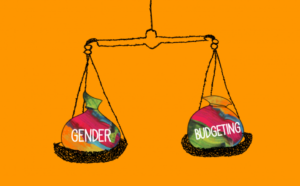GS2 – Vulnerable Sections

Current Budgetary Milestone
- The Union Budget 2025–26 allocated a record ₹4.49 lakh crore towards gender-related initiatives—quadruple the allocation in 2014–15, reflecting a robust commitment to gender-inclusive development.
Understanding Gender Budgeting
- A fiscal policy approach that evaluates how public expenditure affects women and aims to bridge gender disparities.
- Not a separate budget for women; it seeks to integrate gender concerns into all sectors and schemes.
India’s Framework
- Institutionalized in 2005–06 with the introduction of the Gender Budget Statement (GBS).
- Three-Part Framework:
- Part A: 100% of funds earmarked for women-centric schemes.
- Part B: Schemes with 30% or more allocation to women.
- Part C (from 2024–25): Captures schemes with less than 30% allocation—providing a full picture of indirect benefits to women.
Recent Developments
- Gender Budgeting Knowledge Hub: Launched in June 2025 by the Ministry of Women and Child Development (MoWCD) to centralize data, training, and policy materials.
Achievements
- Institutional Strengthening: GBS inclusion in budgets ensures policy accountability.
- Capacity Building: Technical training materials have improved implementation.
- State-Level Adoption: Many states now use Gender Responsive Budgeting (GRB) models.
- Outcome Focus: Shift towards impact-based monitoring with sex-disaggregated data.
- Policy Innovation: Inspired new programs like Mission Shakti promoting women’s socio-economic empowerment.
Challenges
- Implementation Lags: Lack of measurable gender outcomes in many schemes.
- Uneven Ministry Participation: Some departments allocate minimal funds for gender-focused initiatives.
- Data Gaps: Limited availability of sex-disaggregated data restricts evaluation.
- Overfocus on Welfare: Sectors like transport, energy, and environment often lack gender sensitivity.
- Weak Local Implementation: Grassroots bodies like panchayats lack awareness and resources.
Way Forward
- Strengthen Gender Budget Cells at both state and central levels with qualified personnel.
- Mandate outcome-based assessments in all schemes, not just budgetary allocations.
- Expand Part C to capture broader, indirect gender impacts.
- Promote gender mainstreaming in emerging sectors like STEM, climate adaptation, and digital access.
- Use the Knowledge Hub for cross-ministerial learning and inter-state cooperation.
- Foster participatory planning, involving community-level women’s groups.




